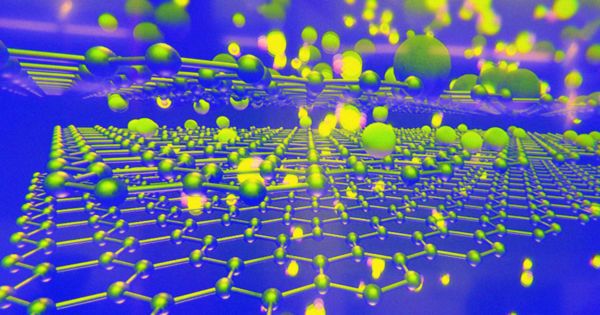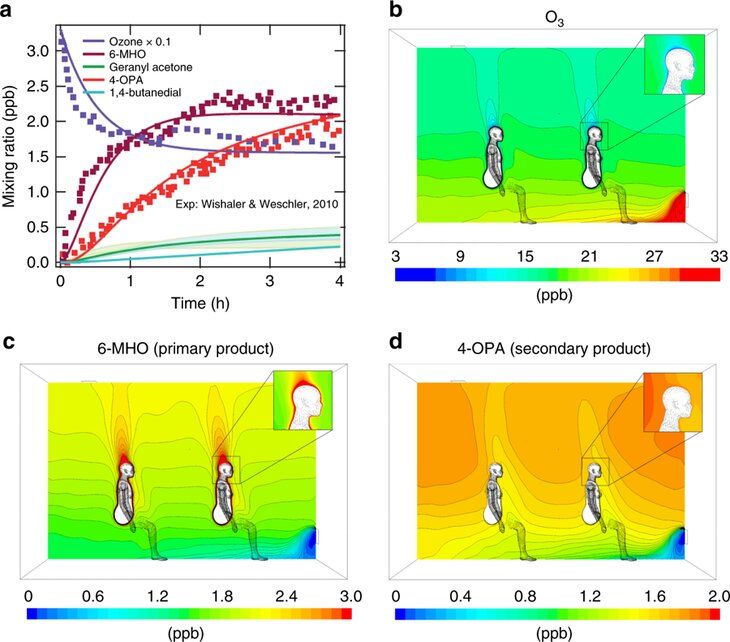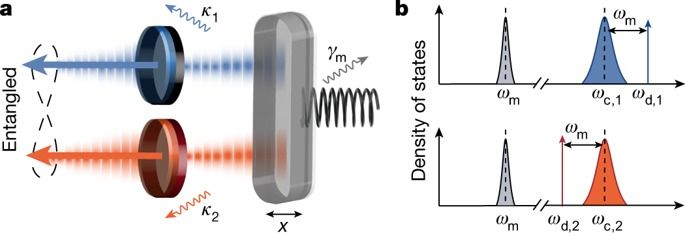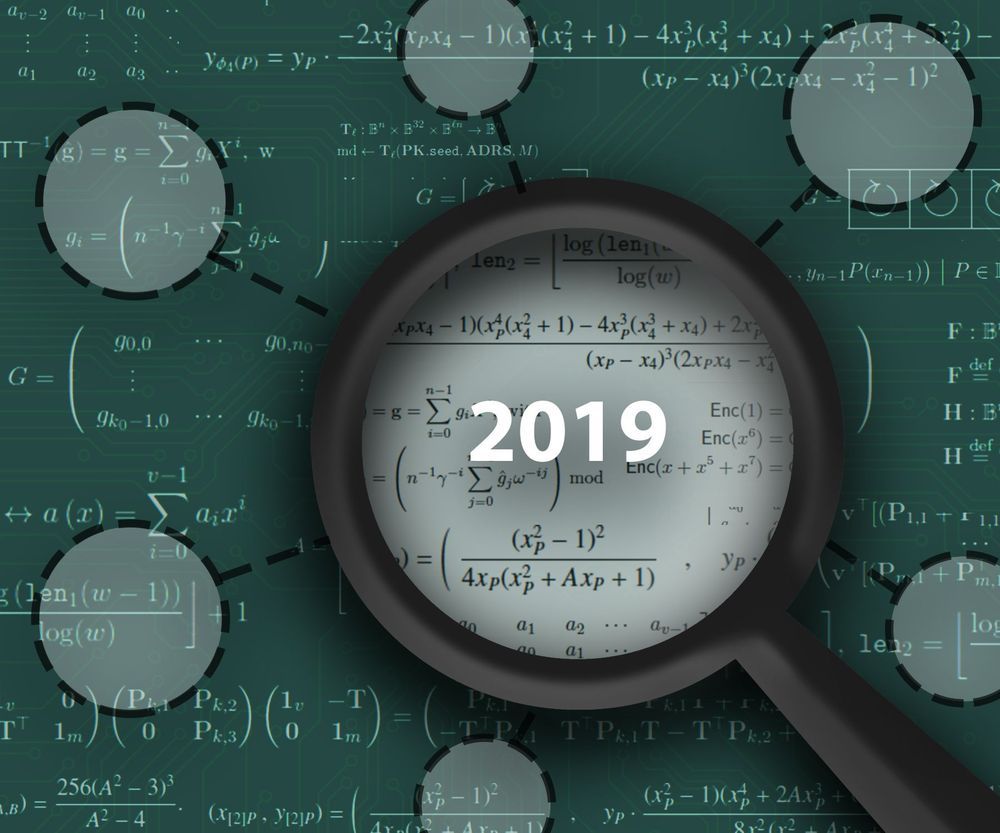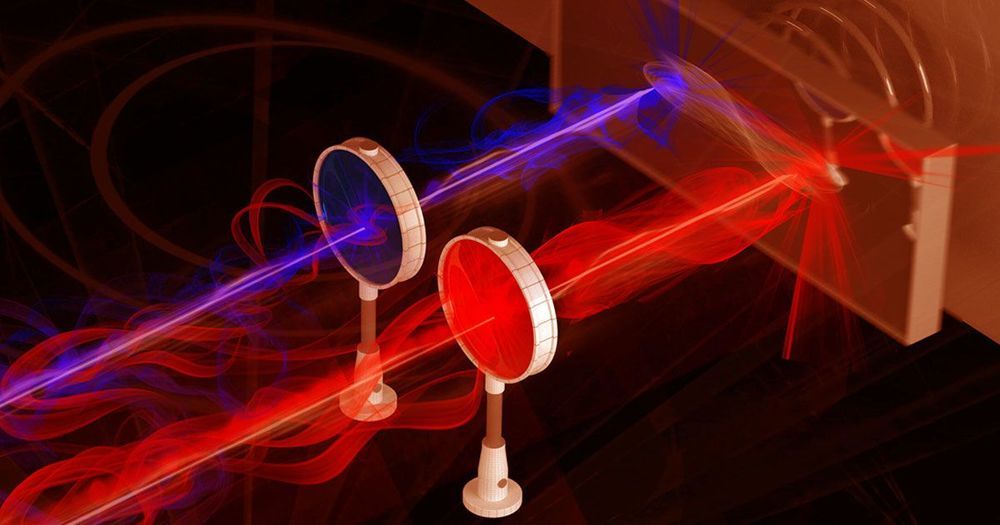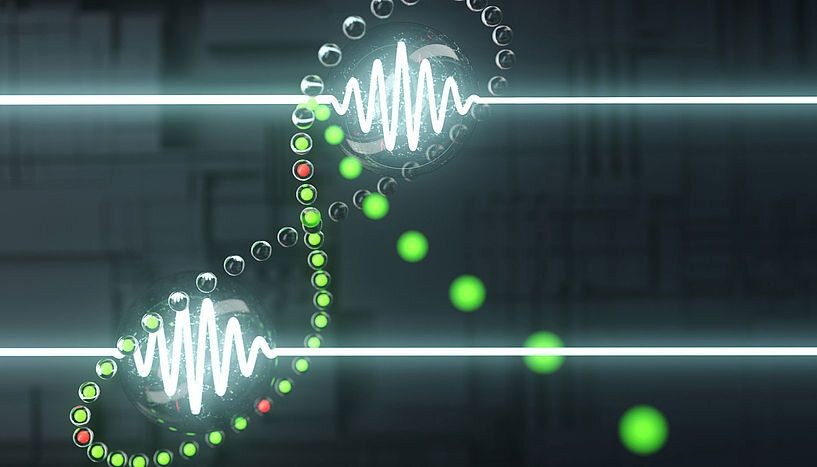Archive for the ‘computing’ category: Page 574
Jun 27, 2019
Physicists ‘teleport’ logic operation between separated ions
Posted by Quinn Sena in categories: computing, particle physics, quantum physics, space
Physicists at the National Institute of Standards and Technology (NIST) have teleported a computer circuit instruction known as a quantum logic operation between two separated ions (electrically charged atoms), showcasing how quantum computer programs could carry out tasks in future large-scale quantum networks.
Quantum teleportation transfers data from one quantum system (such as an ion) to another (such as a second ion), even if the two are completely isolated from each other, like two books in the basements of separate buildings. In this real-life form of teleportation, only quantum information, not matter, is transported, as opposed to the Star Trek version of “beaming” entire human beings from, say, a spaceship to a planet.
Teleportation of quantum data has been demonstrated previously with ions and a variety of other quantum systems. But the new work is the first to teleport a complete quantum logic operation using ions, a leading candidate for the architecture of future quantum computers. The experiments are described in the May 31 issue of Science.
Jun 27, 2019
Pig-Pen effect: Mixing skin oil and ozone can produce a personal pollution cloud
Posted by Quinn Sena in categories: biotech/medical, computing, engineering
When ozone and skin oils meet, the resulting reaction may help remove ozone from an indoor environment, but it can also produce a personal cloud of pollutants that affects indoor air quality, according to a team of researchers.
In a computer model of indoor environments, the researchers show that a range of volatile and semi-volatile gases and substances are produced when ozone, a form of oxygen that can be toxic, reacts with skin oils carried by soiled clothes, a reaction that some researchers have likened to the less-than-tidy Peanuts comic strip character.
“When the ozone is depleted through human skin, we become the generator of the primary products, which can cause sensory irritations,” said Donghyun Rim, assistant professor of architectural engineering and an Institute for CyberScience associate, Penn State. “Some people call this higher concentration of pollutants around the human body the personal cloud, or we call it the ”Pig-Pen Effect.””.
Jun 27, 2019
Stationary entangled radiation from micromechanical motion
Posted by Genevieve Klien in categories: computing, quantum physics
Mechanical systems facilitate the development of a hybrid quantum technology comprising electrical, optical, atomic and acoustic degrees of freedom, and entanglement is essential to realize quantum-enabled devices. Continuous-variable entangled fields—known as Einstein–Podolsky–Rosen (EPR) states—are spatially separated two-mode squeezed states that can be used for quantum teleportation and quantum communication. In the optical domain, EPR states are typically generated using nondegenerate optical amplifiers, and at microwave frequencies Josephson circuits can serve as a nonlinear medium4,5,6. An outstanding goal is to deterministically generate and distribute entangled states with a mechanical oscillator, which requires a carefully arranged balance between excitation, cooling and dissipation in an ultralow noise environment. Here we observe stationary emission of path-entangled microwave radiation from a parametrically driven 30-micrometre-long silicon nanostring oscillator, squeezing the joint field operators of two thermal modes by 3.40 decibels below the vacuum level. The motion of this micromechanical system correlates up to 50 photons per second per hertz, giving rise to a quantum discord that is robust with respect to microwave noise. Such generalized quantum correlations of separable states are important for quantum-enhanced detection and provide direct evidence of the non-classical nature of the mechanical oscillator without directly measuring its state. This noninvasive measurement scheme allows to infer information about otherwise inaccessible objects, with potential implications for sensing, open-system dynamics and fundamental tests of quantum gravity. In the future, similar on-chip devices could be used to entangle subsystems on very different energy scales, such as microwave and optical photons.
Jun 26, 2019
NIST Reveals 26 Algorithms Advancing to the Post-Quantum Crypto ‘Semifinals’
Posted by Richard Christophr Saragoza in categories: computing, encryption, information science, mathematics, quantum physics
The field has narrowed in the race to protect sensitive electronic information from the threat of quantum computers, which one day could render many of our current encryption methods obsolete.
As the latest step in its program to develop effective defenses, the National Institute of Standards and Technology (NIST) has winnowed the group of potential encryption tools—known as cryptographic algorithms—down to a bracket of 26. These algorithms are the ones NIST mathematicians and computer scientists consider to be the strongest candidates submitted to its Post-Quantum Cryptography Standardization project, whose goal is to create a set of standards for protecting electronic information from attack by the computers of both tomorrow and today.
“These 26 algorithms are the ones we are considering for potential standardization, and for the next 12 months we are requesting that the cryptography community focus on analyzing their performance,” said NIST mathematician Dustin Moody. “We want to get better data on how they will perform in the real world.”
Jun 26, 2019
Scientists: Entangled Radiation May Help Build “Quantum Internet”
Posted by Genevieve Klien in categories: computing, internet, quantum physics
To work, quantum computers have to be freezing cold, which makes connecting them to one another a challenge.
Now, for the first time, a team of researchers has found a way to create entangled radiation using a physical object — a move that could help connect future quantum computer systems to the outside world.
“What we have built is a prototype for a quantum link,” Shabir Barzanjeh, the engineer who led the project, said in a press release. “The oscillator that we have built has brought us one step closer to a quantum internet.”
Jun 26, 2019
D-Wave promises chip that could search the whole universe
Posted by Quinn Sena in category: computing
Jun 25, 2019
Physicists develop new method to prove quantum entanglement
Posted by Quinn Sena in categories: computing, particle physics, quantum physics
One of the essential features required for the realization of a quantum computer is quantum entanglement. A team of physicists from the University of Vienna and the Austrian Academy of Sciences (ÖAW) introduces a novel technique to detect entanglement even in large-scale quantum systems with unprecedented efficiency. This brings scientists one step closer to the implementation of reliable quantum computation. The new results are of direct relevance for future generations of quantum devices and are published in the current issue of the journal Nature Physics.
Quantum computation has been drawing the attention of many scientists because of its potential to outperform the capabilities of standard computers for certain tasks. For the realization of a quantum computer, one of the most essential features is quantum entanglement. This describes an effect in which several quantum particles are interconnected in a complex way. If one of the entangled particles is influenced by an external measurement, the state of the other entangled particle changes as well, no matter how far apart they may be from one another. Many scientists are developing new techniques to verify the presence of this essential quantum feature in quantum systems. Efficient methods have been tested for systems containing only a few qubits, the basic units of quantum information. However, the physical implementation of a quantum computer would involve much larger quantum systems.
Jun 25, 2019
Hacker used Raspberry Pi computer to steal restricted NASA data
Posted by Quinn Sena in category: computing
A hacker used a tiny Raspberry Pi computer to infiltrate NASA’s Jet Propulsion Laboratory network, stealing sensitive data and forcing the temporary disconnection of space-flight systems, the agency has revealed.
The April 2018 attack went undetected for nearly a year, according to an audit report issued on June 18, and an investigation is still underway to find the culprit.
A Raspberry Pi is a credit-card sized device sold for about $35 that plugs into home televisions and is used mainly to teach coding to children and promote computing in developing countries.
Jun 25, 2019
Designing light-harvesting organic semiconductor microcrystals with wavelength-tunable lasers
Posted by Quinn Sena in categories: chemistry, computing, nanotechnology, physics
Organic solid-state lasers are essential for photonic applications, but current-driven lasers are a great challenge to develop in applied physics and materials science. While it is possible to create charge transfer complexes (i.electron-donor-acceptor complexes among two/more molecules or across a large molecule) with p-/n- type organic semiconductors in electrically pumped lasers, the existing difficulties arise from nonradiative loss due to the delocalized states of charge transfer (CT). In a recent report, Kang Wang and a team of researchers in the departments of chemistry, molecular nanostructure and nanotechnology in China demonstrated the enduring action of CT complexes by exciton funneling in p-type organic microcrystals with n-type doping.
They surrounded locally formed CT complexes containing narrow bandgaps with hosts of high levels of energy to behave as artificial light-harvesting systems. They captured the resulting excitation light energy using hosts to deliver to the CT complexes for their function as exciton funnels in order to benefit lasing actions. Wang et al. expect the preliminary results to offer in depth understanding of exciton funneling in light-harvesting systems to develop high-performance organic lasing devices. The new results are now available on Science Advances.
Organic semiconductor lasers that function across the full visible spectrum are of increasing interest due to their practical applications from multiband communication to full-color laser displays. Although they are challenging to attain, electrically pumped organic lasers can advance the existing laser technology to rival organic light-emitting diodes.
